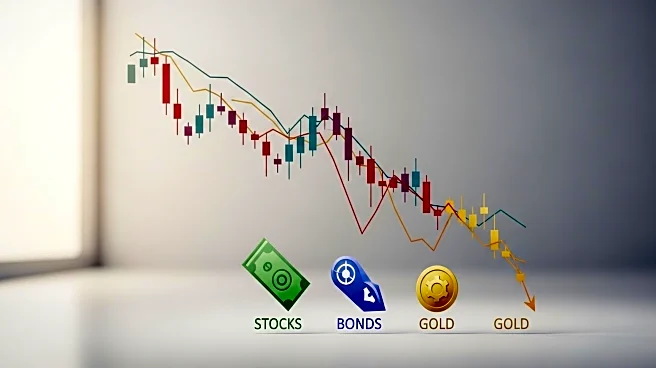What's Happening?
Alcoa, a major aluminum producer, is predicted to experience a 10% increase in its stock price, according to analyst Carter Worth. Worth's analysis is based on chart patterns that suggest a recovery from a previous tariff-related sell-off. Alcoa's stock had dropped by 55% during the sell-off, compared to a 21% decline in the S&P 500. The recovery trajectory indicates potential growth, with a price target set at approximately $35 per share. This analysis is part of a broader market evaluation, highlighting Alcoa's position for a potential upswing.
Why It's Important?
The forecasted increase in Alcoa's stock price is significant for investors and the aluminum industry. A rise in stock value could enhance investor confidence and attract more capital into the sector. This development may also reflect broader economic trends, such as recovery from trade-related disruptions. For stakeholders in the aluminum market, including manufacturers and suppliers, a positive shift in Alcoa's stock could signal improved market conditions and potential growth opportunities. The analysis underscores the importance of monitoring market trends and adapting investment strategies accordingly.
What's Next?
If Alcoa's stock achieves the predicted increase, it could lead to further investment and expansion within the company. Investors may look for additional opportunities in the aluminum sector, potentially driving up stock prices of related companies. Analysts and market watchers will likely continue to monitor Alcoa's performance, assessing the impact of external factors such as trade policies and global demand for aluminum. The company's strategic decisions in response to market changes will be crucial in maintaining momentum and achieving long-term growth.
Beyond the Headlines
The potential rise in Alcoa's stock price may have broader implications for the U.S. manufacturing sector. As aluminum is a key material in various industries, including automotive and construction, improved market conditions could stimulate production and innovation. Additionally, the analysis highlights the role of technical chart patterns in investment decisions, emphasizing the importance of data-driven strategies in financial markets. This development may encourage investors to explore similar opportunities in other sectors, leveraging analytical tools to identify potential growth areas.











